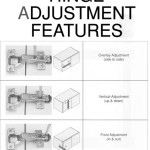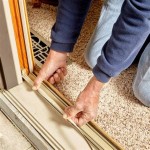Average Cost to Screen In a Patio: A Comprehensive Guide
Screening in a patio is a popular home improvement project, offering a comfortable and bug-free outdoor living space. The cost of this project can vary significantly based on a multitude of factors. Understanding these factors and the associated costs is crucial for homeowners planning to undertake this type of renovation. This article provides a detailed overview of the average cost to screen in a patio, exploring the various elements that influence the overall price.
When considering the expenses involved in screening a patio, it's important to recognize that estimations can only be accurate after a thorough assessment of the existing structure, the desired materials, and the labor required. General estimates often range widely, but this article aims to provide a clearer picture of potential costs and considerations.
Key Point 1: Factors Influencing the Cost of Screening a Patio
Numerous elements contribute to the fluctuating costs associated with screening in a patio. These factors range from the patio's size and existing structure to the type of screening material chosen and the complexity of the installation.
Patio Size: The most obvious factor impacting cost is the size of the patio being screened. Larger patios require more materials, including screening, framing, and hardware. Labor costs also increase proportionately with the size of the area being enclosed.
Existing Structure: The existing structure of the patio plays a significant role in determining the overall cost. If the patio already has a solid roof and support beams, the screening process will be less expensive than if a new roof or structural support needs to be built. Patios with existing posts and beams that are structurally sound can significantly reduce the complexities and costs of the project. However, if the existing structure requires repairs or modifications, this will add to the overall expense.
Screening Material: The type of screening material selected is another influential factor. Fiberglass screening is typically the most affordable option, followed by aluminum and then more specialized materials like pet-resistant or no-see-um screening. The cost difference between these materials can be substantial, and the choice depends on the homeowner's specific needs and budget. Fiberglass is prone to tearing and damage, while aluminum offers greater durability and resistance to weather. Pet-resistant screening is specifically designed to withstand scratching and clawing from animals, and no-see-um screening provides a finer mesh that keeps out even the smallest insects.
Framing Material: The materials used for framing the screened enclosure also affect the total cost. Wood is a common and relatively inexpensive option, but it requires regular maintenance to prevent rot and insect damage. Aluminum framing is more durable and requires less maintenance, but it comes at a higher initial cost. Vinyl framing is another option, offering weather resistance and a clean appearance, but it can be more expensive than wood.
Labor Costs: Labor costs account for a significant portion of the overall expense when screening in a patio. These costs vary depending on the region, the complexity of the project, and the contractor's rates. Hiring a licensed and insured contractor is generally recommended, as they possess the expertise and experience to ensure the project is completed correctly and safely. Obtaining multiple quotes from different contractors is advisable to ensure a competitive price.
Permits: Depending on local building codes and regulations, a permit may be required to screen in a patio. The cost of permits varies by location and the scope of the project. Failing to obtain the necessary permits can result in fines and delays.
Additional Features: The addition of features such as doors, electrical outlets, or ceiling fans will increase the overall cost of the project. The type and number of doors needed, the complexity of the electrical work, and the chosen ceiling fan model all contribute to the additional expense.
Key Point 2: Material Costs Breakdown
A detailed breakdown of material costs can provide a clearer understanding of where the money is being spent. The following information offers a general overview, but prices can fluctuate based on location and supplier.
Screening: Fiberglass screening typically ranges from $0.50 to $1.00 per square foot. Aluminum screening costs between $1.00 and $2.00 per square foot. Pet-resistant screening can range from $2.00 to $4.00 per square foot, and no-see-um screening can cost even more, depending on the specific product.
Framing: Untreated wood framing can cost between $2 and $5 per linear foot, while treated wood can range from $5 to $10 per linear foot. Aluminum framing can cost between $10 and $20 per linear foot, and vinyl framing can be even more expensive, depending on the style and brand.
Hardware: Hardware, including screws, nails, hinges, and other fasteners, typically adds a few hundred dollars to the overall cost, depending on the size and complexity of the project. The cost can increase if specialized hardware is needed for specific features or materials.
Doors: Screen doors can range in price from $100 to $500 or more, depending on the material, size, and features. Sliding screen doors are typically more expensive than hinged screen doors. The complexity of the door installation also influences the labor costs.
Fasteners and Accessories: Additional costs can include spline, screen rollers, and other accessories required for the installation. These items typically account for a relatively small portion of the overall expenses.
Key Point 3: Labor Costs and Hiring a Contractor
Labor costs represent a significant portion of the overall expense of screening in a patio. Hiring a qualified contractor is crucial to ensure the project is completed correctly and efficiently.
Estimating Labor Costs: Labor costs can vary widely depending on the region, the contractor's experience, and the complexity of the project. Generally, labor costs can range from $50 to $100 per hour. A complex project requiring significant structural modifications or intricate design elements will naturally incur higher labor costs.
Choosing a Contractor: Selecting the right contractor is essential for a successful project. It is beneficial to obtain multiple quotes from different contractors, compare their bids, and review their references. Checking online reviews and asking for recommendations from friends or family can also help in the selection process. Ensure the contractor is licensed and insured to protect against liability in case of accidents or damages.
Asking the Right Questions: When interviewing contractors, ask about their experience with similar projects, their project timeline, and their payment schedule. Request a detailed written estimate that includes all costs, including materials, labor, permits, and any potential additional expenses. Inquiring about the contractor's warranty policy and dispute resolution process is also advisable.
Project Management: Some homeowners choose to manage the project themselves, purchasing the materials and hiring individual workers for specific tasks. This approach can potentially save money, but it requires significant time and effort. Managing the project involves coordinating different tradespeople, ensuring materials are delivered on time, and overseeing the quality of the work. It is not recommended for those without prior experience in construction or home improvement.
Negotiating Costs: While it is important to obtain competitive bids, remember that the lowest bid is not always the best option. Consider the contractor's experience, reputation, and the quality of materials they propose to use. Negotiating the price is possible, but avoid pressuring the contractor to cut corners or compromise on quality.
The average cost to screen in a patio is a composite of different expenditures. By understanding the factors that influence the price, the component costs of materials, and the importance of choosing a qualified contractor, homeowners can make informed decisions and plan their projects accordingly.

How Much Does A Screened In Porch Cost 2025

How Much Does It Cost To Add A Screened In Deck Or Porch Your House Real Estate U S News

How Much Does A Screened In Porch Cost 2025

How Much Do Patio Enclosures Cost

How Much Do Retractable Screens Cost Screen Factors

How Much Do Patio Enclosures Cost 2025 Prices

Screened In Porch Cost Estimator Estimate Florida Consulting

Here S The Cost To Add A Screened In Porch 2025

What S My Dream Screen Porch Going To Cost

Screened In Porch Cost Pricing
See Also








